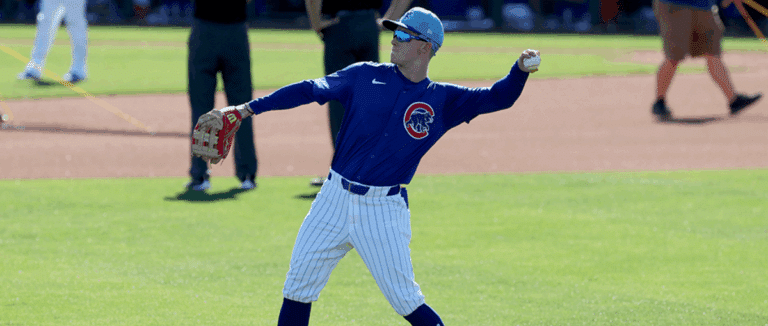How to Read and Understand Betting Odds


Betting odds are an essential part of sports betting, and understanding them is crucial to placing successful bets. However, for those new to sports betting, betting odds can be confusing and intimidating. We get it. Sometimes, we go cross-eyed looking at all of the numbers.
Luckily, learning how to read and understand betting odds is not as complicated as it may seem. We’ll guide you through what the different types of betting odds are, how to read them, and how to use them to your advantage and take your sports betting game to the next level.
Types of Odds
Before we get too deep into odds, let’s talk about the different types of betting odds. There are three main types: American odds, decimal odds, and fractional odds. Sometimes, these will be referred to as moneyline odds, European odds, and UK odds, respectively.
Keep in mind all of these odds essentially represent the same thing, just in different formats. Don’t get too hung up on the format; focus on understanding the underlying concept of odds instead. You’ll find that you like a certain type more than others. That’s typical.
Fractional Odds (UK)
Fractional odds are the most popular way of expressing odds in the UK and Ireland. Frankly, this is my favorite way of looking at odds as well.
They are typically represented as two numbers separated by a slash, such as 2/1 or 7/4. The first number represents your potential profit, while the second number represents your initial stake.
For example, if you see odds of 2/1, this means that for every $1 you bet, you will win $2. So, if you bet $10 and win, you will receive a total payout of $30 ($20 profit + $10 stake).
On the other hand, odds of 1/2 means that for every $2 you bet, you will only win $1. This is because the team or player is heavily favored to win, so the potential profit is lower.
Decimal Odds (Europe, Canada, Australia)
Another type of odds commonly used in Europe, Canada, and Australia are decimal odds. These are represented by a number with two decimal places, such as 2.50 or 1.80.
To calculate your potential payout with decimal odds, simply multiply your bet amount by the odds. For example, if you bet $10 on odds of 2.50, your potential payout would be $25 ($10 x 2.50). This includes your initial stake, so your profit, in this case, would be $15.
Moneyline or American Odds (USA)
And then we have American odds, also known as moneyline odds, which are the most common type of odds used in the United States. These are represented by either a positive or negative number.
Positive numbers indicate the potential profit you could win with a $100 bet. For example, if you see +300 odds, this means that for every $100 you bet, your potential profit would be $300.
Negative numbers, on the other hand, represent how much you would need to bet in order to win $100. For example, if you see -200 odds, this means that you would need to bet $200 to potentially win $100.
How Odds Reflect Probability
There’s a bit more to the odds than some numbers that DraftKings posts on their app. The odds have meaning and correlate to what the house believes a team’s probability to win looks like.
Converting Odds to Probability
When we talk about odds, we’re not just talking about how much money we’ll walk away with if we win (although that’s the point); we also need to consider the likelihood of that outcome happening. That’s where probability comes in.
To convert odds into probability, we can use a simple formula: probability = (1/decimal odds) x 100
For example, let’s take decimal odds of 2.50. To convert this into a percentage chance of winning, we would do the following calculation: (1 / 2.50) x 100 = 40% chance of winning.
If we look at the same American moneyline odds, we can still use this formula. Let’s say The Vikings have a +120. To calculate that into implied probability, we take 100 / (120 + 100) * 100 = 45% chance of winning.
Understanding Overround (or Vigorish)
Something we have to consider when looking at odds is the overround, also known as vigorish or vig. This is essentially the bookmaker’s commission for taking your bet. It ensures that they make a profit regardless of the outcome.
Think of vig like this — let’s say the Kansas City Chiefs have a 50/50 shot at beating the Jacksonville Jaguars. You would think the odds would be even, but because of vig, the bookmaker will adjust the odds to ensure they make a profit. So, instead of each team having equal odds at -110 (meaning you would have to bet $110 to win $100), the bookmaker may offer -105 for one team and -115 for another. This way, regardless of which team wins, the bookmaker will profit.
Factors that Influence Betting Odds
Now that you have a good idea of how sports betting odds work let’s look at some of the factors that can influence betting odds.
Team or Player Performance
The most significant factor in determining odds is team or player performance. If one team or player is on a winning streak, they will likely have more favorable odds than their opponent. On the other hand, if a team has been struggling, their odds might not be as good. Pretty simple, right? Of course, the better team would have better odds of winning, thus lower return on your bet.
This is what makes sports betting so exciting – there is always an element of unpredictability. A team or player may have been underperforming, but they can always make a comeback and defy the odds.
Injuries and Suspensions
Another area that will affect the odds of a game are injuries and suspensions. If a key player is out due to injury or suspension, their team’s odds may decrease as they will be at a disadvantage.
To get ahead of the odds, stay updated on any roster changes or injuries before placing your bets, as this can significantly impact the outcome of a game.
Pro Tip: If a player is listed as “out” just before game time, check the odds, as they might not have factored that in, and that could be a solid bet.
Betting Trends
Betting trends, believe it or not, also play a role in determining odds. How the public is betting can influence the odds set by bookmakers. If many people are betting on one team, the bookmaker may adjust the odds to balance out their potential losses.
Professional sports bettors often find value in going against popular betting trends, as they believe the odds may not accurately reflect the actual probability of an outcome.
Understand the Odds and Bet Smarter
Understanding the ins and outs of sports betting odds is essential for any serious sports bettor. It’s more than just figuring out the potential return on a bet; it incorporates understanding the probability of an outcome and the factors that influence those odds.
Most casual sports bettors will not care too much about the odds — or at least what they mean — but pro bettors will. Every movement of the line is more or less money in their pockets.
From team performance to injuries and betting trends, many elements can sway the odds. Being aware of these factors and vigilantly following updates can help you make more informed bets.

Matt Brown
Head of Sports Betting and DFS
Matt’s love for sports betting and daily fantasy sports, coupled with a deep understanding of football, hockey, and baseball, shapes his innovative thoughts on Hello Rookie. He has a B.S. in Aeronautical Computer Science and a M.S. in Project Management.







